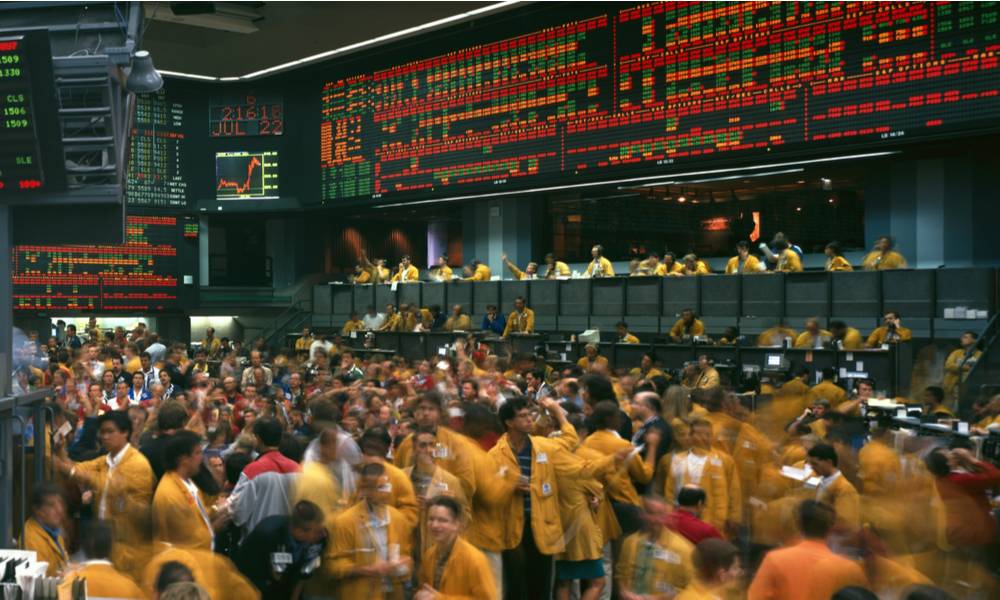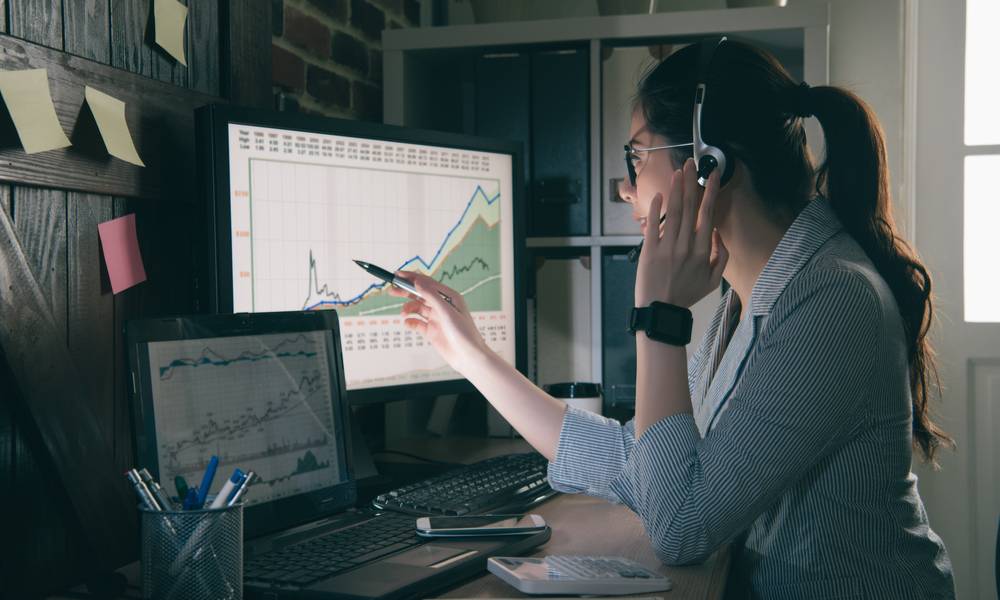Navigating the noise: how ambient sound affects trading performance
Ambient sound affects financial traders’ ability to perceive financial risks and UNSW Business School research suggests their workspaces can be designed to improve efficiency
Last year, stock markets peaked on 19 February. Soon after, the outbreak of COVID-19 triggered a panic-fueled freefall in share prices. During this time, financial traders were forced to adjust their day-to-day activities to work from home. Banks like HSBC and JP Morgan were quick to send their staff home for safety reasons. Others expressed fears that working from home could compromise traders ability to complete trades and lead to further market instability.
For many office workers, COVID-19 proved that remote working was possible. It also had significant ramifications in the world of trading and risk management, according to UNSW Business School’s Scientia Associate Professor Elise Payzan-LeNestour and Deputy Head of School of Banking & Finance (Education) and Associate Professor James Doran. In their recent study: Impact of ambient sound on risk perception in humans: neuroeconomic investigations, A/Prof. Payzan-LeNestour and A/Prof. Doran examined how the presence of ambient sound impacts financial traders’ ability to perceive market risk.
The paper was written in collaboration with Lionnel Pradier, former Head of Quantitative Research at JP Morgan, UNSW Psychology’s Scientia Professor Bernard Balleine, and Wharton Business School’s Assistant Professor of Marketing Gideon Nave. Their findings provide evidence that the buzz on trading floors sharpens traders’ ability to properly assess risk in markets during prolonged episodes of extreme (very high or very low) volatility but impairs it during the transition phase (from very high volatility to low volatility or vice versa).

What happens during market transitions?
The post-COVID-19 move to remote working coincided almost perfectly with a market transition from very high volatility to low volatility, explained the authors. In such a transition context, the risk perception of traders exposed to the buzz of the trading floor would typically feature “overshooting” in their risk perception – when the newer low levels of risk are perceived as even lower than they are, explained A/Prof. Payzan-LeNestour.
The move to working from home could have improved market efficiency during that period by insulating traders from the buzz of trading floors, and this may have helped them better perceive risk during the transition from high volatility to low volatility. “If you think about what the markets were like pre-COVID, from November 2019 to February 2020, we knew COVID was out there, but the markets didn’t think it was a big deal, and volatility was low,” said A/Prof. Doran.
“The financial markets during the first two months of 2020 were still in a low volatility market regime – a long-term, persistent state where markets behave normally. However, the move to high volatility can happen suddenly, known as the transition phase. Take, for example, the market shock that occurred from the end of February to the second week of March: volatility (as a number) surged from about 17 per cent to 85 per cent.”
Historically, that’s a massive market shift.

So when traders experience a low volatility period on a trading floor, they’re good at sensing what the market is doing. But when the market transitions from low to high volatility and the traders are working on the trading floor, and there’s lots of noise, the study’s findings suggest this could be detrimental to traders’ risk perception. As a result, traders may struggle and not react quickly enough to secure good trades.
This brings in this notion of whether or not it was good to be at home rather than being on the trading floor when the transition took place. From mid-March through to most of 2021, some traders may have benefited from the fact that they have had to work from home, with most trading floors being empty the past year,” said A/Prof. Doran.
For example, suppose a discretionary manager’s job depended on picking the right kind of stock or being in or out of the market at the right time. In that case, it would have been essential to identify the transition phases correctly. "Our findings suggest that the manager could have benefited from not being on an active trading floor during the transition because they could have missed out on returns," said A/Prof. Doran.
Read more: Can high levels of volatility make traders go rogue?
So, for a discretionary fund manager, working from home during COVID-19 would have been a good thing from that perspective. “We’ve seen very good performance from discretionary-oriented managers who have been able to adapt quickly to both the transition to the high volatility environment and the transition back down to those low volatility environments,” said A/Prof. Doran.
Broader implications
This is just one part of the story though. The findings further suggest that in a period of sustained high volatility – such as the one we saw in the first couple of months of COVID-19 – the buzz actually improves trader risk perception. According to the authors, this might help explain why some institutional investors lost some of their edge over retail investors when they were forced to move from their working place to home. Hearing the buzz would have been helpful to them.
The researchers conclude that the environment for traders must be increasingly time-sensitive. “It’s not about avoiding the noise all of the time or seeking the noise. You have to be very smart here; you have to adjust your environment, you should seek the buzz in normal times during regimes, but you should avoid it during the transition period,” said A/Prof. Payzan-LeNestour.

What should traders do?
Whether or not a trader should seek the buzz also depends on the dominant trading strategy of the trader. “If I’m a day-to-day trader who is managing a lot of swings and prices, I need to feel the buzz on the market because those things occur within a particular regime, and the more I can hear what’s going on in the marketplace, the better I’m going to perform," said A/Prof. Doran. "In contrast, if I’m more about timing the marketplace, I’m not going to want those things.”
A/Prof. Payzan-LeNestour added: “So if I’m into market timing strategies and I’m forced to work from home, I might actually benefit from recreating the noise of the trading floor via headphones ... There is evidence that sound presented in peripersonal space (close to the head) is more arousing than sound presented further from the head (for example, if it emanates from the surroundings)."
Elise Payzan-LeNestour is a Scientia Associate Professor, and James Doran is Deputy Head of School (Education) and Associate Professor in the School of Banking & Finance at UNSW Business School. A/Prof. Payzan-LeNestour's research aims to show how people perceive and react to financial risks, using a combination of theoretical and experimental methods from decision neuroscience, experimental economics and financial economics. A/Prof. Doran's research focus is on theoretical and empirical asset pricing, with a specialisation in derivatives, option pricing and volatility.
